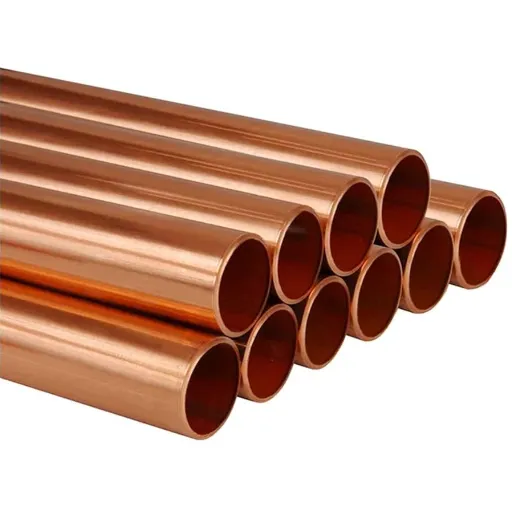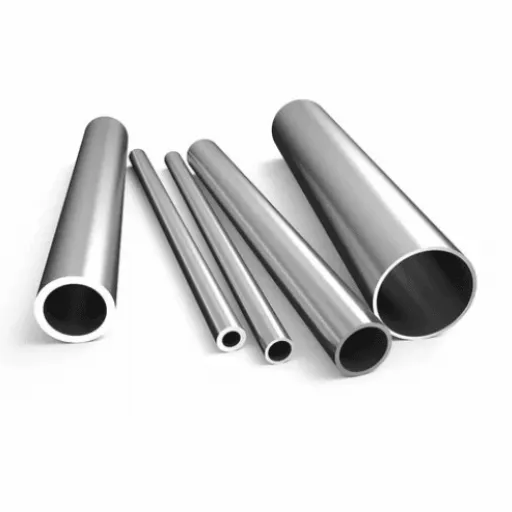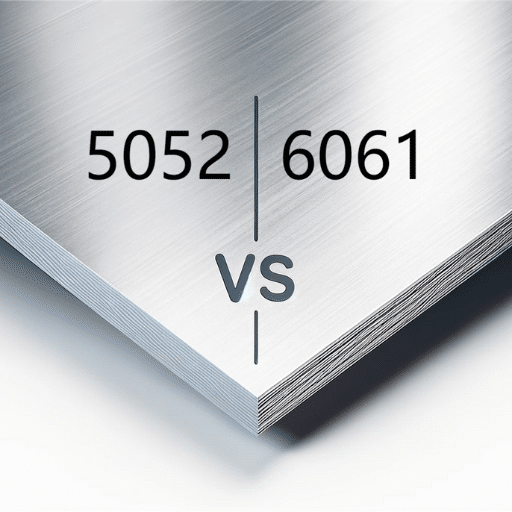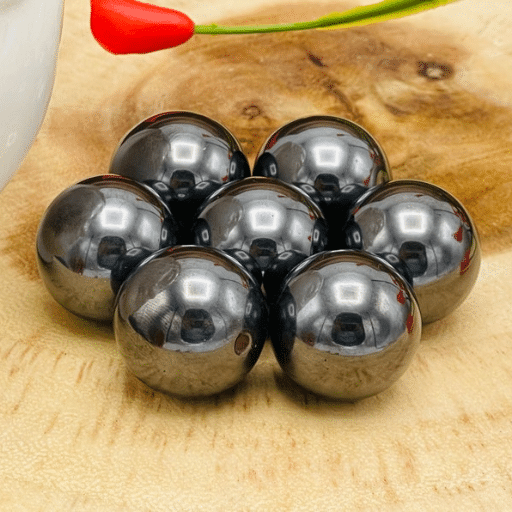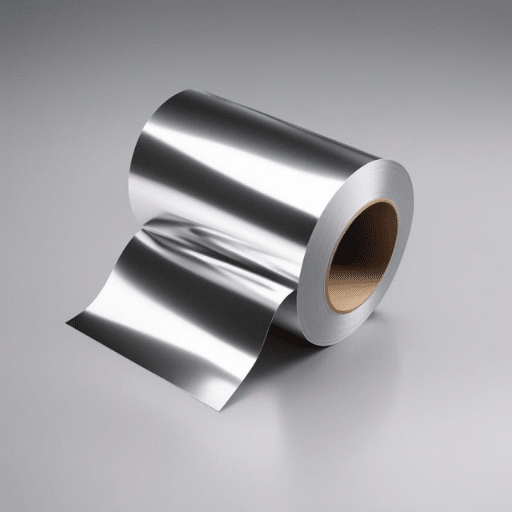When it comes to selecting stainless steel for various industrial, architectural, or household applications, understanding the differences between the available grades is crucial. Among the numerous options, SS 304 and SS 202 stainless steel stand out as two of the most commonly used grades, each designed to meet specific needs. However, their varying chemical compositions, corrosion resistance, and mechanical properties mean that choosing the right one can significantly impact performance, durability, and cost-efficiency. This article aims to provide a clear comparison between SS 304 and SS 202, equipping you with the technical knowledge needed to make informed decisions based on your specific requirements. Whether you’re a professional in the industry or a curious enthusiast, this guide will help you understand the key distinctions that set these two grades apart.
What Is Ss 304 Stainless Steel?
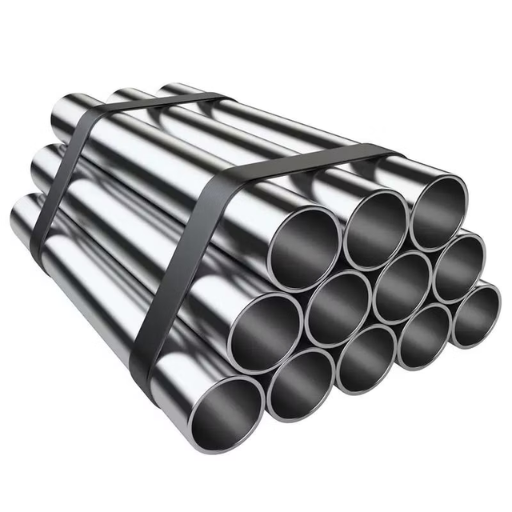
SS 304 stainless steel is an austenitic stainless steel widely recognized for its exceptional corrosion resistance, durability, and versatility. It is primarily composed of chromium (18-20%) and nickel (8-10.5%), which contribute to its strength and resistance to rust in various environmental conditions. It is non-magnetic, has excellent forming and welding properties, and is commonly used in industries such as food processing, construction, and chemical manufacturing due to its reliability and hygienic qualities.
Composition and Properties of Grade 304
Grade 304 stainless steel consists of specific proportions of elements that give it its unique properties. The primary composition includes chromium (18-20%) and nickel (8-10.5%), which are essential for imparting corrosion resistance and durability. Additionally, it contains manganese (up to 2%), silicon (up to 1%), and carbon (up to 0.08%), contributing to its strength, toughness, and heat resistance. Trace amounts of sulfur (up to 0.03%) and phosphorus (up to 0.045%) are also present.
The material exhibits the following technical properties:
- Density: 8.0 g/cm³
- Melting Point: 1399-1454°C (2550-2650°F)
- Tensile Strength: ≥515 MPa (75 ksi)
- Yield Strength (0.2% Offset): ≥205 MPa (30 ksi)
- Elongation at Break: ≥40%
- Hardness: ≤201 HB (Brinell Hardness)
Grade 304 is noted for its excellent weldability and formability, making it a preferred choice across industries. Its resistance to oxidation and corrosion in a range of environments ensures long-term reliability under normal operating conditions.
Applications of 304 Stainless Steel
- Food processing equipment, including mixing tanks and storage containers, due to its corrosion resistance and hygienic properties.
- Architectural applications such as railings, facades, and decorative trims, owing to its aesthetic finish and durability.
- Chemical containers, including those used in transportation, as it resists chemical attack from many common compounds.
- Kitchenware and cutlery, favored for its ease of cleaning, resistance to oxidation, and long-term durability.
- Medical instruments and implants, due to its non-reactive nature and compatibility with sterilization processes.
Why Choose SS 304 for Kitchen Sinks?
The reason why stainless steel 304 stands out when choosing a material for a kitchen sink is compelling. First of all, it offers remarkable corrosion resistance which guarantees its durable nature even when subjected to water, soap, and other acidic liquids on a regular basis. Second, it provides an elegant polished surface that not only makes the kitchen look better but also is easy to maintain. Lastly, it is non-porous which makes it highly antiseptic and prevents bacteria growth which makes it safer and more handy for everyday use.
What Is Ss 202 Stainless Steel?
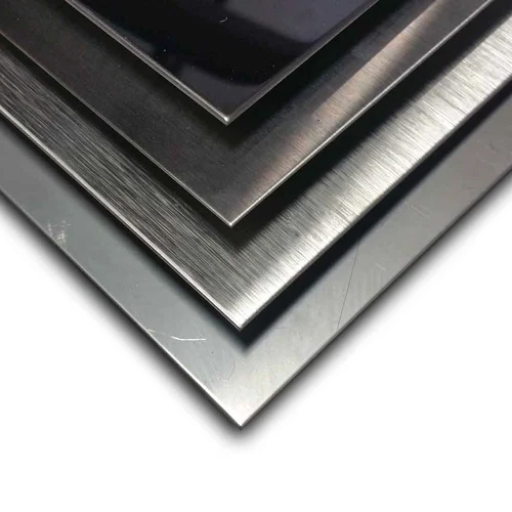
SS 202 stainless steel is an austenitic stainless steel alloy that is part of the 200 series. It is primarily composed of chromium, manganese, and nickel, with a lower nickel content compared to the 300 series, making it a more cost-effective option. This grade of stainless steel is widely recognized for its moderate corrosion resistance, good strength, and excellent weldability. It is commonly used in applications such as kitchen utensils, furniture, automotive trims, and architectural components due to its aesthetic appeal and durability.
The inclusion of manganese as a substitute for a significant portion of nickel allows SS 202 to maintain properties similar to higher-nickel grades while being more economically viable, especially when nickel prices fluctuate. However, SS 202 does exhibit slightly lower resistance to pitting and crevice corrosion compared to the 300 series, making it less suitable for highly corrosive environments. Despite this, it remains a popular material choice for applications where moderate corrosion resistance and structural integrity are essential.
Understanding the Grade 202 Composition
Stainless steel grade 202 is classified as an austenitic stainless steel that primarily consists of chromium, manganese, and nickel, along with other minor alloying elements. Its chemical composition typically includes approximately 16-18% chromium and 4-6% nickel, significantly less nickel compared to the 300 series. To compensate for the reduced nickel content, manganese (7.5-10%) and nitrogen are added, which stabilize the austenitic structure and provide comparable mechanical properties. Additionally, it contains small amounts of carbon (up to 0.15%), silicon (up to 1%), and phosphorus and sulfur (up to 0.06% and 0.03% respectively), which influence its corrosion resistance and workability.
This grade is designed as a cost-effective alternative to higher-nickel stainless steels, offering sufficient toughness and strength while being more resistant to price fluctuations driven by nickel market variations. The balance of elements gives SS 202 adequate resistance to oxidation and general corrosion, although it performs less effectively in environments that are highly acidic or exposed to chlorides, compared to higher grades like 304 or 316. These composition characteristics make it suitable for structural components, kitchen utensils, automotive trims, and applications requiring moderate corrosion resistance.
Common Uses for 202 Stainless Steel
202 Stainless Steel is predominantly used in applications that demand an optimal balance between cost-efficiency and performance. Its durability and moderate corrosion resistance make it ideal for manufacturing kitchen utensils, such as bowls, trays, and cutlery, where exposure to moisture is consistent but not extreme. Additionally, it is widely utilized in the construction of structural components like roofing sheets or railings, particularly in indoor or less aggressive outdoor environments. Automotive trims and decorative components also benefit from the alloy’s aesthetic appeal and satisfactory resistance to wear. These practical applications highlight the material’s economy and versatility in various industries.
Advantages of 202 Over Other Grades
- Cost-Effectiveness: Grade 202 stainless steel is significantly more affordable when compared to higher grades like 304 or 316, making it an economical choice for applications where premium corrosion resistance is not critical.
- Good Mechanical Properties: Despite its lower cost, Grade 202 exhibits substantial strength and durability, making it suitable for structural components and mechanical parts that require moderate tensile properties.
- Lightweight Composition: Due to its reduced nickel content and increased manganese, Grade 202 is lighter than other austenitic grades, making it advantageous for applications requiring reduced weight without compromising strength.
- Adequate Corrosion Resistance in Mild Environments: While Grade 202 doesn’t match the corrosion resistance of higher grades, it performs well in indoor conditions or environments with low exposure to harsh corrosive agents.
- High Workability: This grade offers excellent machinability and formability, allowing for efficient fabrication processes such as bending, cutting, and welding, even in large-scale manufacturing.
How Do SS 304 and SS 202 Differ in Corrosion Resistance?
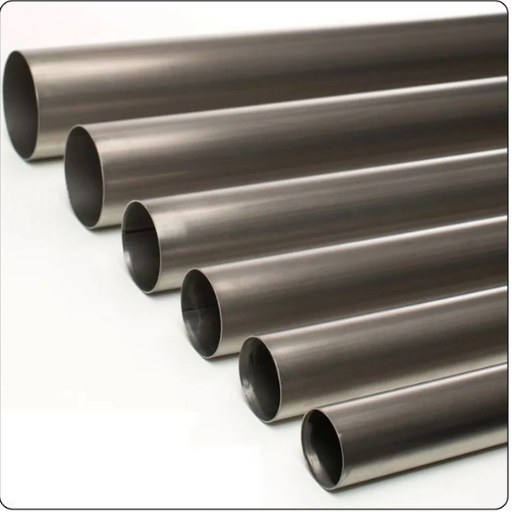
The primary difference between SS 304 and SS 202 lies in their chromium and nickel content, which directly impacts corrosion resistance. SS 304 contains higher levels of chromium (18-20%) and nickel (8-10.5%), offering superior resilience against oxidation and pitting, particularly in harsh or chloride-rich environments. On the other hand, SS 202 has a reduced nickel content (4-6%) and replaces part of it with manganese, resulting in lower corrosion resistance. While SS 202 performs adequately in mild indoor conditions, it is less suitable for applications exposed to marine environments, chemicals, or high humidity when compared to SS 304.
Impact of Nickel and Chromium on Corrosion Resistance
Nickel and chromium play critical roles in enhancing the corrosion resistance of stainless steel. Chromium, when present in amounts of at least 10.5%, enables the formation of a passive oxide layer on the steel surface, which protects against oxidation and corrosion. Higher chromium levels, such as those found in SS 304 (18-20%), further strengthen this protective layer, making the material more resilient in oxidizing environments. Nickel, present in SS 304 at 8-10.5%, stabilizes the austenitic structure, thereby improving the alloy’s toughness and resistance to pitting and stress corrosion cracking, especially in chloride-rich environments. However, in SS 202, the lower nickel content (4-6%) and increased manganese levels enhance affordability but compromise the material’s resistance to such aggressive conditions. These parameters highlight the trade-offs between cost and performance when selecting stainless steel grades for specific applications.
Comparing Corrosion Resistance in Different Environments
Stainless steel 304 (SS 304) exhibits superior corrosion resistance across diverse environments compared to stainless steel 202 (SS 202), particularly in chloride-exposed, saline, and industrial conditions.
|
Environment |
SS 304 |
SS 202 |
|---|---|---|
|
Chloride-rich |
High Resist |
Low Resist |
|
Saline |
Excellent |
Moderate |
|
Industrial |
Superior |
Limited |
|
Urban |
Strong |
Adequate |
|
Freshwater |
Excellent |
Good |
|
Acidic |
High Resist |
Limited |
This table captures the comparative corrosion resistance of SS 304 and SS 202 based on commonly encountered environmental factors, emphasizing the performance differences influenced by their composition.
What Are the Mechanical Properties of Grade 304 and Grade 202?
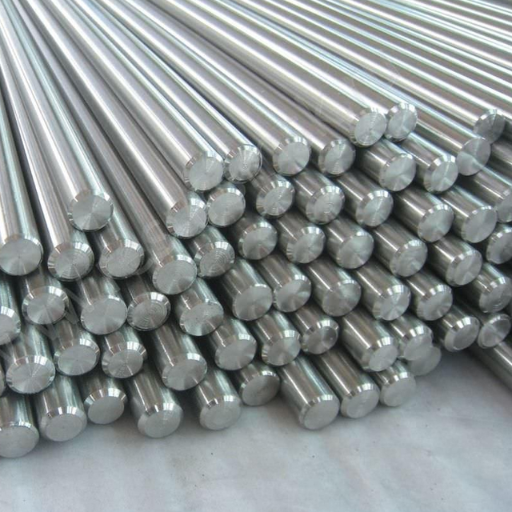
Grade 304 and Grade 202 are both austenitic stainless steels, but they exhibit distinct mechanical properties due to differences in their composition.
Grade 304 is renowned for its excellent toughness, even at cryogenic temperatures. It has a higher tensile strength, typically around 515 MPa, and an impressive yield strength of approximately 215 MPa. Additionally, its elongation at break is about 70%, indicating superior ductility and formability.
Grade 202, on the other hand, has slightly reduced mechanical properties due to its higher manganese and lower nickel content. Its tensile strength is approximately 515 MPa as well, but its yield strength is marginally lower at about 275 MPa. The elongation at break is around 40-50%, which, while good, is less than that of Grade 304, demonstrating reduced flexibility and workability.
These variations underscore the importance of selecting the appropriate grade based on specific application requirements and environmental conditions.
Strength and Durability of SS 304 vs SS 202
The strength and durability of SS 304 and SS 202 differ significantly based on their mechanical properties, corrosion resistance, and environmental suitability. Below is a concise summary of these key differences presented in tabular form:
|
Parameter |
SS 304 |
SS 202 |
|---|---|---|
|
Tensile Str. |
~515 MPa |
~515 MPa |
|
Yield Str. |
~215 MPa |
~275 MPa |
|
Elongation |
~50% |
~40-50% |
|
Corrosion Res. |
Superior |
Moderate |
|
Nickel Content |
Higher |
Lower |
|
Manganese |
Lower |
Higher |
|
Workability |
Higher |
Lower |
|
Suitability |
Harsh Cond. |
Mild Cond. |
Weldability and Fabrication Differences
The weldability of SS 304 is superior compared to SS 202 due to its higher nickel content, which enhances resistance to cracking during welding. SS 304 can be easily welded using most standard welding techniques without requiring post-weld annealing, unless heavy sections are involved. On the other hand, SS 202 has lower nickel and higher manganese content, which slightly reduces its weldability. While SS 202 can still be welded effectively, it may require more precision, and extra precautions may be needed to avoid deformation or cracking.
Similar to SS 202, SS 304 is also more ductile in nature which improves workability and makes bending, forming, and machining simpler to SS 304 unlike ss 202. Worksss 304 preferred choice for components with complex geometry SS 202 on the other hand is less ductile ss 202 is less ductile makes fabrication difficult. The notable difference why ss 304 stands out above ss 202 is wned applications results in complex construction fabrication and abundant welding.
Comparing the Cost and Availability of SS 304 and SS 202
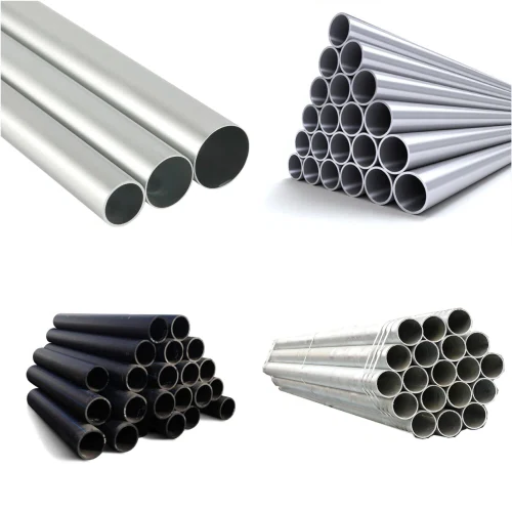
According to the latest information available, SS 202 is generally lower in cost and more readily available than SS 304, which is comparatively more expensive due to its superior composition and greater demand in specialized applications.
|
Parameter |
SS 304 |
SS 202 |
|---|---|---|
|
Cost |
Higher |
Lower |
|
Availability |
Moderate |
High |
|
Corrosion Res. |
Superior |
Lower |
|
Fabrication |
Easier |
Challenging |
|
Durability |
High |
Moderate |
Market Pricing of 304 and 202 Stainless Steel
The market pricing of SS 304 and SS 202 stainless steel varies depending on regional demand, raw material costs, and the intended application. SS 304, being an austenitic stainless steel with a higher chromium (approximately 18-20%) and nickel (8-10.5%) content, is generally priced higher due to its superior corrosion resistance, durability, and suitability for specialized industries such as food processing and chemical equipment. On the other hand, SS 202 contains lower nickel (around 4-6%) and replaces it partially with manganese, making it a more economical option for less demanding applications.
Price Range (Estimated per ton)
- SS 304: Typically ranges between $2000-$3000, depending on global nickel and chromium price fluctuations.
- SS 202: Typically ranges between $1000-$2000, making it a budget-friendly alternative.
These prices are influenced by:
- Raw Material Costs – Nickel and chromium prices largely dictate the cost differences.
- Global Market Trends – Variations in supply and demand across industries.
- Processing Costs – Higher fabrication versatility of SS 304 may slightly increase manufacturing costs.
Users must consider the specific technical requirements of their applications before selecting between SS 304 and SS 202, as the price differential is directly tied to significant differences in material properties and performance.
Availability and Preferred Uses in Industry
From my research, SS 304 is widely available in global markets due to its versatility and broad adoption in industries like food processing, chemical equipment, and pharmaceuticals, where corrosion resistance and hygiene are crucial. Meanwhile, SS 202 is more commonly used in regions where cost-effectiveness is a priority, such as in India and other developing markets. Its applications include furniture, kitchen utensils, and architectural components. While SS 304 is preferred for projects demanding high durability and exposure to harsh conditions, SS 202 serves well in less aggressive environments where moderate strength and cost savings are sufficient.
Reference Sources
- Nickel Alloys Online: Difference between SS 304 and 202
- Oshwin: Difference between 304 and 202 stainless steel grades
- Ambica Steels: Stainless Steel 202 Vs 304/304L – The Difference
- Venus Wires: SS 202 vs. SS 304 – Choosing the Right Stainless Steel
- Quora: How are stainless steel 304 and stainless steel 202 different?
Frequently Asked Questions (FAQs)
Q: What is the primary difference between SS 304 and SS 202 stainless steel in terms of composition?
A: The primary difference lies in their composition. SS 304 is an austenitic stainless steel alloy that contains higher amounts of chromium and nickel, whereas SS 202 is a type of stainless steel that uses manganese and nitrogen as substitutes for some of the nickel content found in 304. This makes SS 202 a more cost-effective option compared to SS 304.
Q: How do the mechanical properties of SS 304 and SS 202 stainless steel compare?
A: SS 304 generally has better mechanical properties than SS 202. The 304 grade stainless steel offers superior strength, durability, and resistance to intergranular corrosion, making it suitable for a wider range of applications. SS 202, while also strong, is more prone to corrosion under certain conditions due to its lower nickel content.
Q: Why is SS 304 preferred for welding applications over SS 202?
A: SS 304 is preferred for welding because it offers excellent weldability and is less susceptible to intergranular corrosion post-welding. The presence of higher chromium and nickel content in SS 304 allows for smoother oxyacetylene welding, which makes it a better choice for applications requiring welding processes.
Q: Can you explain the significance of the “300 series” in stainless steel?
A: The “300 series” refers to a family of austenitic stainless steels, which are known for their high corrosion resistance and excellent formability. SS 304 is part of this series, specifically known for its robustness and versatility. The series includes various grades, such as 304 and 316, each with specific properties suited for different applications.
Q: How do SS 304 and SS 202 differ in terms of corrosion resistance?
A: SS 304 offers better corrosion resistance than SS 202 due to its higher nickel and chromium content. This makes it more suitable for environments exposed to moisture and corrosive elements. SS 202, being a 200 series stainless steel, can be more prone to rust and corrosion, especially in saline or acidic environments.
Q: What are the typical applications for SS 304 and SS 202 stainless steel?
A: SS 304 is used in a wide range of applications, including kitchen equipment, chemical containers, and architectural structures, due to its strength and resistance to rust. SS 202 is often used in less demanding applications, like kitchen utensils, furniture, and automotive trim, where cost is a significant factor.
Q: How can a spark test help differentiate between SS 304 and SS 202?
A: A spark test involves grinding a sample of the steel to produce sparks. The sparks for grade 304 tend to be longer and more reddish-orange, indicating higher nickel content, while those for grade 202 are shorter and more yellowish, reflecting its higher manganese and nitrogen content. This test can be a quick way to distinguish between the two grades.
Q: What is the role of manganese in SS 202 stainless steel?
A: Manganese in SS 202 serves as a partial substitute for nickel, which reduces the cost of the material. It helps stabilize the austenitic structure and enhances the steel’s toughness and strength. However, it may also result in reduced corrosion resistance compared to higher nickel grades like SS 304.
Q: Are there any limitations to using SS 202 in industrial applications?
A: Yes, the limitations of using SS 202 include its lesser resistance to corrosion and its tendency to suffer from intergranular corrosion in certain conditions. While it is more affordable, these factors can limit its use in industries that require high durability and exposure to corrosive environments.
Q: Why might someone choose SS 202 over SS 304 despite its limitations?
A: A person might choose SS 202 over SS 304 primarily due to cost considerations. SS 202 is more economical and can be a viable option for applications where corrosion resistance is not as critical, and where the budget is a significant constraint. It’s a practical choice for less demanding environments.

